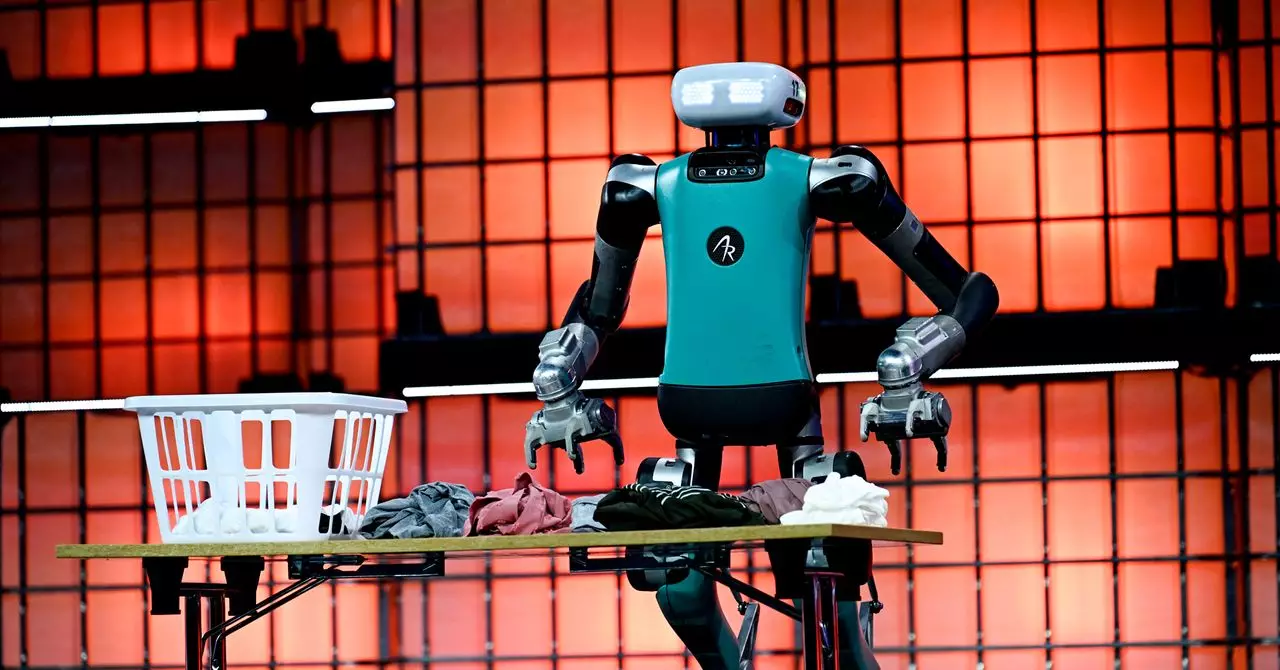As technological advancements accelerate at an unprecedented pace, the realm of robotics continues to experience transformative changes. The recent announcement from Boston Dynamics regarding their all-electric humanoid robot, Atlas, signifies a pivotal moment in industrial automation. Due to commence its tasks in a Hyundai factory later this year, Atlas, which has evolved immensely since the hydraulic models that created internet sensations over the past decade, represents not just a technological marvel but also a profound shift in how we conceptualize labor in manufacturing.
This introduction of Atlas into commercial settings marks a significant leap forward for Boston Dynamics, a company forged in innovation and aiming to redefine what robots can accomplish. The expectations are high, as Boston Dynamics endeavors to show that an automated humanoid can be reliable and efficient, performing tasks that are typically challenging for human workers. According to Kerri Neelon, a spokesperson for the company, Atlas will excel in lifting bulky and awkward objects—a challenge that often leads to injuries or inefficiencies in human workers. The undercurrent of excitement surrounding this technology is palpable, highlighting a potential transformation of labor beyond our current understanding.
A New Wave of Humanoid Robots
Atlas is not alone in making its foray into the manufacturing landscape; the landscape is burgeoning with new entrants. By 2025, the market anticipates a slew of multipurpose humanoid robots transitioning from the confines of research labs into mainstream applications. Agility Robotics’ Digit and Figure’s biped serve as prime examples of the gradual evolution of robots taking on paid work roles. Interestingly, major tech giants, including Apple and Meta, are whispering about their own humanoid ambitions, suggesting a significant corporate appetite for integrating this technology into everyday life.
The burgeoning field of humanoid robotics is not merely an experimental novelty; it is projected to burgeon into a $38 billion market by 2035, as estimated in a recent Goldman Sachs report. This valuation illustrates a substantial appreciation from preceding estimates, indicating that investor confidence in humanoid robots’ adaptability and versatility grows. Unlike static traditional assembly line automation—which is tailored for specific tasks—humanoid robots offer a more dynamic solution that can navigate various responsibilities akin to human workers.
Humans and Robots: Partners in Industry
The philosophy underpinning the implementation of humanoid robots is rooted in a vision that these machines will complement rather than replace human workers. Jonathan Hurst, co-founder of Agility Robotics, articulates the differences between specialized automation and the flexible capabilities of humanoid robots, emphasizing their potential to enhance productivity, particularly in environments not requiring constant operation.
Boston Dynamics echoes this sentiment, drawing attention to the innovative design of their robots that aims to integrate seamlessly into human-centric environments. Neelon reinforces this idea by suggesting that because we inhabit a “human-first world,” robots should reflect this priority and be equipped to function dynamically within it.
While the potential for humanoid robots like Atlas is vast, significant challenges remain. The anticipated Tesla Optimus robot has faced skepticism following concerns regarding its capabilities for autonomous operation. Issues surrounding the necessary components, exacerbated by geopolitical factors like China’s export restrictions on rare-earth metals, add another layer of complexity to the journey towards widespread deployment.
The Road Ahead: An Uncertain Future
While the excitement surrounding humanoid robotics is undeniable, the journey towards mainstream acceptance is fraught with uncertainty. Questions about reliability, safety, and the ethical implications of integrating robots into workplace environments will demand thorough examination. Industry leaders must navigate these challenges thoughtfully to ensure that technology serves to uplift human labor rather than diminish it.
As we stand on the precipice of what promises to be a transformative era in manufacturing and labor, the introduction of humanoid robots like Atlas begs reflection not only on their technological potential but also on the fundamental question of what work means in a rapidly evolving world. The road ahead remains uncertain and complex, but it is precisely this uncertainty that amplifies the excitement surrounding the future of robotics and the critical intersections of technology, labor, and society.

